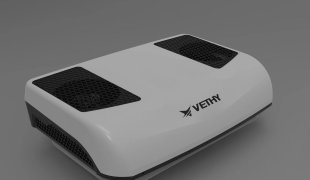How Do I Know If a Parking Air Conditioner Is Compatible with My Vehicle?
October 15, 2024
Introduction to Parking Air Conditioner Compatibility
The Importance of Compatibility
Compatibility is a key factor when putting a parked air conditioner (PAC) in your car since it can have a big impact on overall satisfaction, safety, and performance. When a compatible PAC is used, the cooling system may operate well without compromising the mechanical or electrical systems of the car. Choosing an informed choice for your car is much easier with the help of this article, which will walk you through all the different PAC compatibility issues.
Overview of Parking Air Conditioner Technology
Modern parking air conditioners are advanced devices that are made to effectively cool vehicles while they are parked. They run on battery power or other alternative energy sources and are not dependent on the car's engine.Understanding how these systems work and their specific requirements is essential for determining compatibility with your vehicle.
Vethy Parking Air Conditioners: Compatibility, Efficient Cooling, and Customized Choices for Comfort
Leading innovator in cutting-edge parking air conditioning systems that boost your car's efficiency and comfort is Vethy Industries. The VS01, VS02, and VS02 Pro parking air conditioners are among our models that are designed to function flawlessly with a variety of car models. Vethy places a high priority on developing systems that are simple to install, economical to operate, and ecologically friendly because we recognize the diverse demands of our clients, who range from fleet managers to long-haul truckers.
Excellent Vehicle Compatibility
Vethy's parking air conditioners are manufactured using advanced technology to ensure that they are mechanically and electrically compatible with a wide range of vehicle types. Without sacrificing the structure or functionality of your car, Vethy's air conditioners may be precisely tailored to fit your needs for either rooftop or backpack air conditioning installation. Our models ensure that the power in your car is used safely and efficiently by accommodating varying electrical systems and battery capacity. Our energy-saving inverters and intelligent temperature management make our air conditioners not only comfortable, but also good for your car's battery life.
Environmentally Friendly and Energy-Saving Solutions
Vethy is committed to sustainability. For this reason, the ecologically friendly R410A refrigerant with low global warming potential (GWP) is used in Vethy's parking air conditioners. These refrigerants show our dedication to lessening the environmental effect of our goods without compromising their functionality. Additionally energy-efficient, our air conditioners ensure that they use less electricity while yet offering outstanding cooling. In the long run, this helps you save money on running expenses while also helping the environment.
Vethy parking air conditioners allow you to have the necessary comfort without sacrificing the environment or performance.Our commitment to compatibility, technological excellence, and environmentally friendly solutions makes Vethy the preferred choice for those who demand the best in vehicle climate control.
Understanding Parking Air Conditioner Basics
How Parking Air Conditioners Work
The core of a parking air conditioners is the refrigeration cycle, which allows the device to absorb heat from within the vehicle and release it outdoors just like dometic. A number of components, including as evaporators, condensers, and compressors, cooperate to keep the cabin at a suitable temperature. The Parking Air Conditioner's Components
Components of a Parking Air Conditioner
1.A part of the system that moves and compresses refrigerant to raise its temperature and pressure is called the compressor.
2.Condenser: It cools the heated refrigerant gas and turns it into a liquid by releasing heat into the air around it.
3.Evaporator: The evaporator retains heat from the cabin air, allowing refrigerant to re-evaporate into gas.
4.The expansion valve controls the quantity of refrigerant that enters the evaporator, which controls the quantity of available cooling power.
Vehicle Compatibility Factors
Vehicle Make and Model
Identifying your car's make and model is the first step towards determining compatibility. Manufacturers differ in terms of accessible space, mounting options, and electrical system specifications.
Always consult your vehicle's manual or manufacturer guidelines before purchasing a PAC.
Electrical System Requirements
Parking air conditioners require specific electrical configurations to operate effectively. Understanding your vehicle's electrical system is vital for ensuring compatibility.
Electrical Compatibility Check
Battery Capacity and Amperage
1.A car's battery capacity and amperage are two of the most crucial factors in determining compatibility. You must ensure that your battery can handle this additional load without degrading its performance because PACs rely on the battery for electricity.
2. Power Source Capacity: Verify your battery's amp-hour (Ah) rating. A higher Ah rating indicates that the battery can supply more energy over time.
3.Amperage Draw: Research the amperage draw of the PAC you are considering. Ensure that your battery can support this draw without being drained excessively during operation.
Electrical System Protection
It is crucial to think about whether your car's electrical system has enough protection against overloads and short circuits in addition to battery capacity. Fuse or circuit breakers installed in your car can help shield the PAC and its electrical system from harm.
Physical Space Considerations
Available Space for Installation
Measure the space in your car where a PAC can be installed before you buy one. Make sure there is adequate space for the unit and any other parts that it may require, including mounting brackets or ducting.
Rooftop or Window Mount Options
Parking air conditioners come in various mounting options—primarily rooftop or window-mounted units. Each has its own space requirements:
· Rooftop Units: Typically require more vertical space but do not obstruct windows.
· Window Units: Easier to install but may limit visibility and access.
Evaluate which option best suits your vehicle's design and your personal preferences.
Mechanical Compatibility
Vehicle Structure and Weight
The structural integrity of your vehicle must be considered when installing a PAC. Weight added to the top of the car by rooftop units may have an impact on stability and handling. Verify that the added weight will not jeopardize safety on the roof of your car.
Brackets and Mounting Systems
Most PACs come with specific brackets or mounting systems designed for particular types of vehicles. Ensure that you purchase compatible brackets if they are not included with your PAC. Proper installation is crucial for optimal performance and safety.
Refrigerant Types and Compatibility
Environmental Impact of Refrigerants
The environmental effects of the refrigerants used in parked air conditioners can vary. Having an understanding of these effects will enable you to select an eco-friendly unit.
Choosing the Right Refrigerant for Your Vehicle
Hydro fluorocarbons, or HFCs, are used extensively but have an important chance to cause global warming. Natural refrigerants: Although they might need to be treated carefully, ammonia and carbon dioxide are less damaging to the environment.Make that the refrigerant you use conforms with the local environmental laws and also your PAC.
Energy Efficiency and Vehicle Performance
Impact on Fuel Economy
While parking air conditioners primarily run on battery power, their operation can indirectly affect fuel economy—especially if they are run while idling or if they cause increased demand on the engine when starting up again after use.
Energy Consumption of Parking Air Conditioners
Evaluate how much energy a PAC consumes during operation. Energy-efficient models can help minimize overall energy use while still providing effective cooling solutions.
Climate and Environmental Adaptability
Operating Temperature Ranges
Different parking air conditioners have varying operating temperature ranges. Ensure that any unit you consider can function effectively within the climate conditions you typically encounter.
Weatherproofing and Durability
Consider whether the PAC is designed to withstand harsh environmental conditions like heavy rain or extreme temperatures. Durability features can significantly extend the lifespan of your cooling system.
User Interface and Controls
Ease of Use and Accessibility
A user-friendly interface is essential for ensuring ease of operation while on the road. Look for models with intuitive controls that allow quick adjustments without distraction.
Smart Controls and Connectivity
Many modern PACs come equipped with smart technology that enables remote monitoring and control via smartphone apps or integrated dashboards—adding convenience to user experience.
Maintenance and Serviceability
Routine Checks and Maintenance
Regular maintenance is key to ensuring long-term functionality of your parking air conditioner. Familiarize yourself with routine checks required for optimal performance.
Accessibility for Repairs
Consider how easy it will be to access components for repairs or maintenance tasks once installed in your vehicle—this can save time down the line!
Cost Considerations for Compatibility
Initial Investment vs. Long-Term Savings
Assessing costs involves looking at both initial investment prices as well as potential long-term savings associated with energy efficiency improvements over time!
Operating Costs and Energy Efficiency
Evaluate ongoing operating costs related to energy consumption; efficient models may yield significant savings over time compared against less efficient alternatives available today!
Safety Standards and Regulations
Compliance with Vehicle Safety Regulations
Ensure any chosen PAC complies with relevant safety regulations; this protects both users' health/safety while ensuring legal compliance within industry standards!
Electrical Safety Precautions
Electrical safety should always be prioritized when installing new equipment! Follow manufacturer guidelines closely regarding installation procedures/requirements!
The Role of Vehicle Age and Condition
Older vs. Newer Vehicle Models
Compatibility factors may vary significantly between older/newer models due largely differences in design specifications/technologies used throughout years!
Vehicle Condition and System Integrity
Assessing overall condition/integrity existing systems helps determine whether upgrades/installations will yield desired results effectively moving forward!
Advanced Features and Compatibility
Smart Technology Integration
Smart technology capabilities enhance user experience by providing real-time data/monitoring options—ensuring optimal performance maintained consistently throughout use!
Remote Monitoring and Control
Remote access features allow users adjust settings even when away from their vehicles—adding convenience while improving overall efficiency achieved through effective management practices implemented regularly over time!
Environmental Considerations
Sustainable Cooling Solutions
Sustainable solutions are increasingly important as consumers demand greener products! Look out for environmentally friendly options available within market today!
Eco-Friendly Refrigerant Options
Choosing eco-friendly refrigerants ensures compliance with environmental regulations while minimizing negative impacts associated traditional refrigerants used historically across industries globally today!
Vehicle Type Specific Compatibility
Trucks, RVs, and Vans
Different vehicles require unique considerations regarding compatibility! Assess specific needs based upon type/usage patterns experienced regularly throughout daily operations undertaken collaboratively among stakeholders involved directly contributing towards achieving desired results efficiently moving forward together united purposefully toward shared goals achieved collectively





